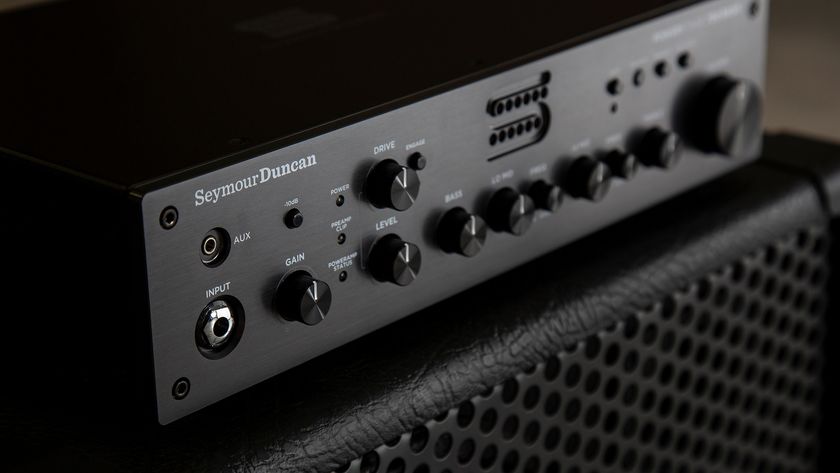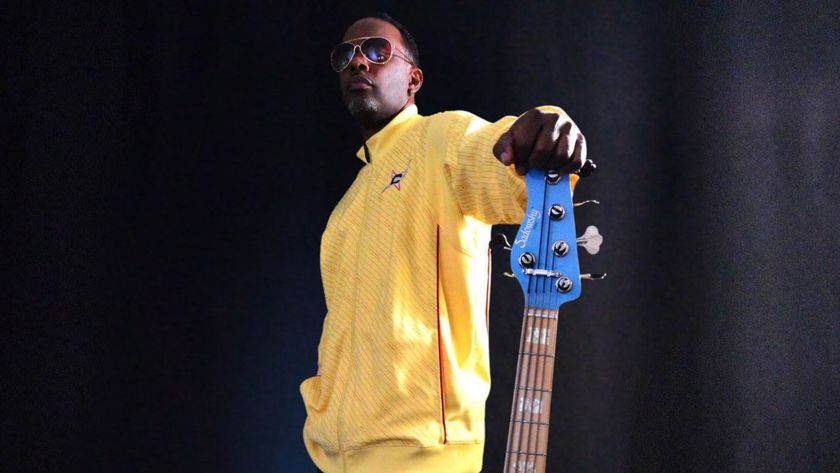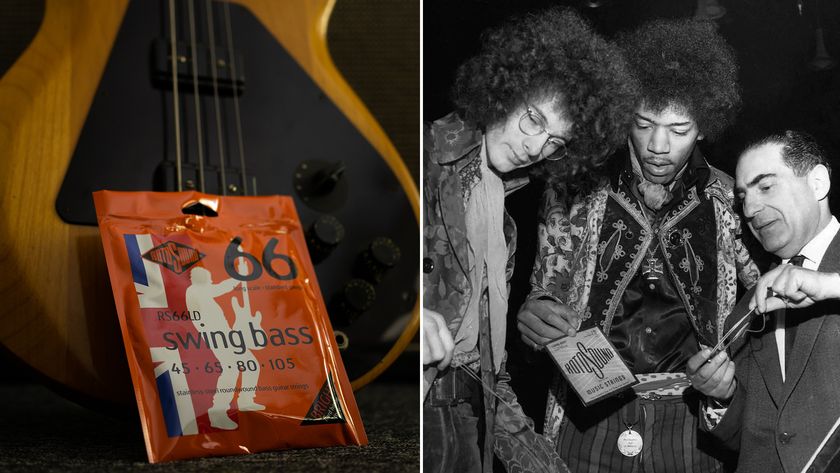As I Lay Dying: Battle Hymns

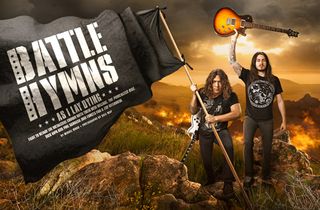
Originally published in Guitar World, November 2010
As I Lay Dying fight to retain the metalcore crown with their new release, The Powerless Rise. Nick Hipa and Phil Sgrosso join forces for a GW interview.
Since they emerged from the SoCal metalcore scene nearly a decade ago, San Diego's As I Lay Dying have established a solid reputation for hellaciously hard music. Put on the band's latest album, The Powerless Rise, and you'll wait all of 16 seconds for the first blast of post-Slayer fury. From there, it's a relentless onslaught of intricate twin-guitar riffs, pummeling double-bass beats and singer Tim Lambesis' serrated howl.
But making such aggressive music required some brutal honesty between the band’s members. Prior to making The Powerless Rise, the guys had a hard time taking criticism from one another. But as guitarists Nick Hipa and Phil Sgrosso explain, in creating the album they learned to embrace a tough-love approach and do what’s best for the music.
“We’re finally in a place where we can just straight-up shoot each other’s ideas down,” says Hipa, lunching with Sgrosso and Guitar World at an upscale burger joint across Sunset Boulevard from the Hollywood Palladium, where the quintet are set to headline tonight’s stop on the Cool Tour. “Before, we had to employ a lot of tact and be as delicate as possible. Now we’ve gotten far enough along with each other that we can actually be honest and not take it personally.”
The communication breakdown was due in part to struggles between Sgrosso and Lambesis. Both Sgrosso and Hipa joined As I Lay Dying (which also includes drummer Jordan Mancino and bassist Josh Gilbert) before the release of the band’s breakthrough 2005 disc, Shadows Are Security. At that time, the group was more or less Lambesis’ show, and though the guitarists’ induction unquestionably improved the music, personality conflicts and creative disagreements were frequent as the two new members acclimated to the group’s dynamics. As resentments grew, rehearsals became studies in passive-aggressive behavior.
Hipa remembers, “Eventually it got to a point where Tim was like, ‘I don’t know if we can work with a guy like Phil, because he’s so difficult.’ And I was like, ‘Well, the only reason Phil’s being difficult is because he thinks that this is the best thing for the album.’ ”
Get The Pick Newsletter
All the latest guitar news, interviews, lessons, reviews, deals and more, direct to your inbox!
With Hipa serving as mediator—a job for which the affable part-time surfer is exceptionally well suited—Lambesis and Sgrosso eventually ironed out their differences in a series of band meetings. “I think what we’ve come to understand is that people aren’t being stubborn for selfish reasons,” Hipa says of their internal politics. “We’re all working toward the same goal, which is to put out killer albums and play killer shows.”
So far, they’ve been successful. Shadows Are Security earned As I Lay Dying their first slot on Billboard’s album chart, while its follow-up, 2007’s An Ocean Between Us, debuted at Number Eight. In addition, appearances on Ozzfest, Sounds of the Underground and Warped Tour helped establish the band as one of metal’s most kinetic live acts. “Kids really, really love them,” says Underoath guitarist Tim McTague, who is sharing stages with As I Lay Dying on the Cool Tour. “They’re not just a band that goes out and plays a bunch of songs. They put on a show and portray this larger-than-life thing, even in a normal-sized club.”
With The Powerless Rise, As I Lay Dying seem to have hit their stride. Produced by Killswitch Engage guitarist Adam Dutkiewicz (who also produced An Ocean Between Us) and Daniel Castelman, the album demonstrates that the group has reached a new level of songcraft and performance. Tracks like “Without Conclusion” and the breakneck “Condemned” feature heavy riffing and raw brutality, while “Parallels,” “Anger and Apathy” and “Upside Down Kingdom” demonstrate the group’s firm grasp of dynamically structured songwriting. Overall, there is a greater range of styles and emotions on the album. And, in the opinion of Lambesis, The Powerless Rise captures “the best performances we’ve ever done as a band. If you asked Phil and Nick if there was anything they wish they could change on our older albums, they’d give you a pretty long list,” Lambesis says. “It’d be really short for this one. They were very precise.”
But while As I Lay Dying have worked out their communication issues for The Powerless Rise, they also found that it pays to work separately. Unlike bands that write song arrangements by jamming together, the guys discovered they do their best when presenting their ideas to one another in fully formed fashion.
“For a lot of bands, jamming things out is an awesome way to work out the songs,” Sgrosso says. “We tried it in the past, and we even tried it at the beginning phase of The Powerless Rise. But it just seemed kind of counterproductive, with so many initial ideas from each person about where the song should go. Everyone wants it to go somewhere different.”
“Part of the frustration of jamming is not being able to say, ‘Hey, this is the riff, and this is my idea for a drumbeat,’ ” adds Hipa. “A lot of times Jordan would wanna put his own rhythmic idea on it before fully giving the riff the drumbeat it was supposed to have.”
Their solution was to work separately at their homes, with each guy demoing guitars and programming drums in order to show everyone else what they want for the song. “That way you can get all that miscommunication out of the way,” Sgrosso says. “When you go to rehearsal you’re not trying to explain the part for half the day; you’re reworking it, or just smoothing certain things out. Jamming adds an organic element to what a band does, and we’re not trying to remove that from our methods or sound. We’re just trying to be a little more productive with the time we spend in the rehearsal room.”
Still, the unexpected does have its value, Sgrosso insists. Although the guitarist says The Powerless Rise reflects his growing confidence in his ability to envision where the band’s music is going, he never views rehearsal-room input from his bandmates as a total waste of time. “Because that could spark an idea for me,” he explains. “It might not work for the song at that point, but it could spark something else. Or something I do could spark something for somebody else.”
Sgrosso and Hipa both admit that they found themselves wanting for a spark of inspiration while writing songs for the new album. “There was a little bit of uncertainty about what else we could add to the sound to take us to the next level,” Sgrosso says. “But I think we quickly caught onto some ideas, and we just kind of went from there.”
Hipa adds, “We’re very aware that this is an intense, energetic band, and we don’t really feel like it’s a good idea for us to just go off the deep end and come out with a super-random album. We try to incorporate our various influences into what it is we do.” He name checks unlikely inspirations like Jeff Buckley and Thin Lizzy, whose influence on the group’s music is perhaps more spiritual than stylistic. Hipa recalls, “Sometimes Phil would send over a song, and I’d be like, ‘Dude, this sounds like our band, but we’ve never done that before. It sounds sick!”
Lambesis says Hipa and Sgrosso’s playing is “at a different level” than when they first joined the group. On earlier albums the singer often came up with riffs, but this time admits, “I made a minimal contribution because what they’re doing is beyond my ability as a guitar player.” He laughs. “That’s a positive thing.”
Dutkiewicz, likewise, notes that he’s seen growth in As I Lay Dying’s music and playing over the two albums he’s made with them. “The cool thing about As I Lay Dying is that they keep getting more aggressive, yet more melodic at the same time,” he says. “They’re always wanting to be a better band, and they’ve definitely got that passion to strive for more.”
As Dutkiewicz sees it, Sgrosso and Hipa are both great players, but they’re also polar opposites. “Nick will practice his solo for hours on end, freaking whiddly-whiddly all day long,” he says. “And Phil doesn’t practice anything except writing riffs. It’s a cool partnership.”
“We complement each other’s strengths,” is how Sgrosso sums up the guitarists’ partnership. “Nick is very meticulous with very fast playing. With my stuff, it’s more rhythm and riff based: simple leads, simple melodies. Then when we need a ripping guitar solo to just kick people in the face, it’s like, Here’s the part, Nick. Have fun!”
Each man has a decidedly different approach to gear. Sgrosso goes for lots of effects, whereas Hipa adheres to the basics. “I have it pretty simple: head, cab, overdrive, delay,” Hipa says. “And then Phil’s got his rack. He does a lot of the texturing and layering and stuff.”
“I’m a big fan of delayed guitars and adding layers to make a part sound fuller,” Sgrosso says. “Before I even joined the band I was into a lot of delayed stuff. When I was really young, I loved U2, especially The Edge’s heavily delayed sound. I just love that extra atmosphere and otherworldly sound that a delayed guitar can add to a part.” He satisfies that desire throughout The Powerless Rise in cuts such as “Anger and Apathy” and “The Only Constant Is Change,” where the noise recedes briefly to reveal an unexpected flash of beauty.
Despite Sgrosso’s early appreciation of guitar players and the presence of his dad’s acoustic around the house, it wasn’t until he saw Nirvana’s MTVUnplugged performance that he got the itch to play. Sgrosso’s parents enrolled him and his older brother in guitar lessons. “One of the reasons I kept wanting to improve was because I felt like I had to beat him,” he laughs. “And I think he was the same way.”
Even so, during his adolescence, Sgrosso’s interests were divided between playing guitar and skateboarding, with the guitar often taking a backseat. “I remember I was skating down the street one time, and my stepmom comes driving down, yelling at me because my guitar lesson started in five minutes,” he says. “I just didn’t like it anymore. It wasn’t until my parents moved to a more rural location that I couldn’t skateboard anymore, so I was like, ‘I guess I’ll start playing guitar again.’ Then I wrote my first complete song and I was so amped on that.”
Sgrosso’s best friend was a drummer, and soon they’d formed a band, covering “Smells Like Teen Spirit” and Weezer’s “Undone (The Sweater Song).” Alternative rock eventually led to California punk like NOFX and Lagwagon. “I didn’t get fully into metal and metal guitar until senior year of high school,” he says, not long before he joined As I Lay Dying.
Unlike Sgrosso, Hipa was headbanging from early on. After receiving a Fender Squier from his mom for his 12th birthday, he played “Fade to Black” and “Enter Sandman” in the eighth-grade talent show. “A lot of my friends were listening to Green Day and Pearl Jam and stuff, and I’ve got Blizzard of Ozz,” he says. “I’m like, ‘This is way sweeter.’ ” Unfortunately for Hipa, his mom wouldn’t buy him Pantera’s Far Beyond Driven because it carried a Parental Advisory sticker. “So I’d go sleep over at my friend’s house and we’d listen to it all night.”
As a guitarist, Hipa began chasing excellence immediately. “I would read Guitar World and an interview with Steve Vai where he’s like, ‘I practice for 10 hours a day, and here’s my workout,’ ” he says. “In my mind it was ingrained that if I wanna be a good guitar player I have to practice a lot and hang out in the old woodshed. Fortunately, I got grounded a lot.”
Years later, both Hipa and Sgrosso have developed styles that find room in metalcore’s frenetic chug for new kinds of expression. “I can’t exactly bedazzle anyone with my technical prowess,” says Hipa. “I just care about sounding good and coming up with stuff where it’s like, ‘Ooh, that was tasty.’ ”
“Even though a lot of our music is very fast and aggressive, there’s a lot of emotion that goes into a lot of the melodies and riffs,” Sgrosso adds. “That’s what I love about a band like Deftones, who’ve been one of my biggest influences—just how music can change the way you feel.” He shrugs. “Provoking an emotion is all I wanna do.”
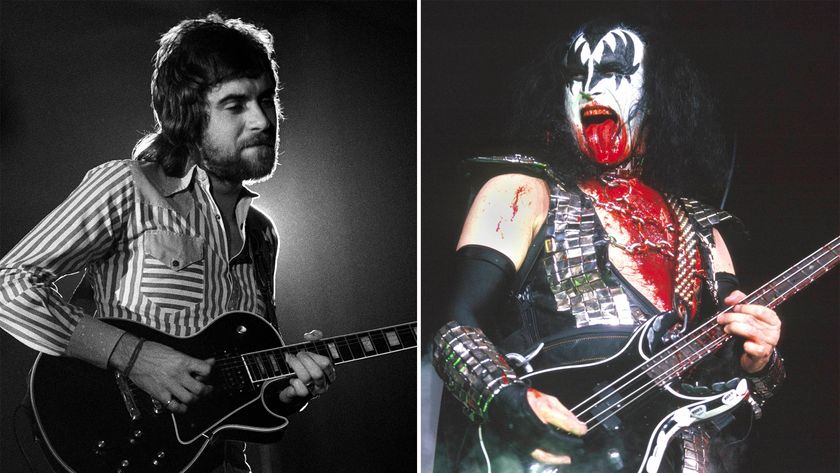
“I had to use the same microphone that Gene Simmons used with all the blood coming out of his mouth. Can you imagine that!”: Mick Rogers recalls Kiss supporting Manfred Mann's Earth Band in their early days

“Once Dave got his Roland Space Echo, it changed the vibe… that, and a lot of marijuana”: They inspired everyone from Oasis to the Smashing Pumpkins. Now English post-punk luminaries the Chameleons are back for more

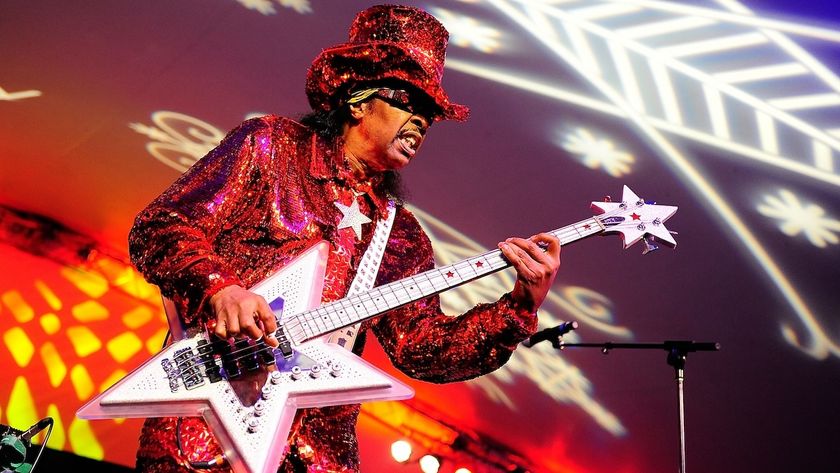


![[L-R] George Harrison, Aashish Khan and John Barham collaborate in the studio](https://cdn.mos.cms.futurecdn.net/VANJajEM56nLiJATg4P5Po-840-80.jpg)
